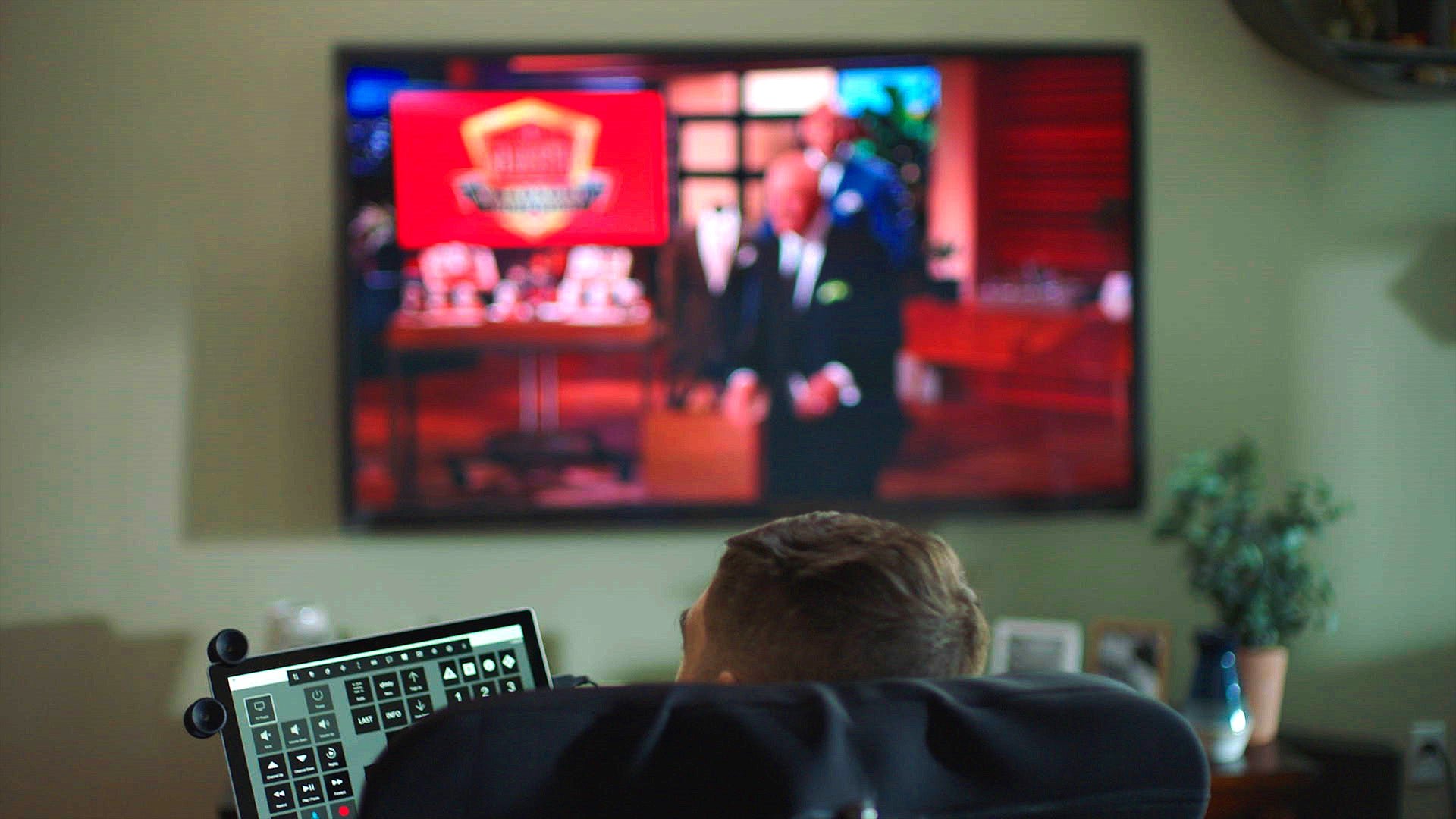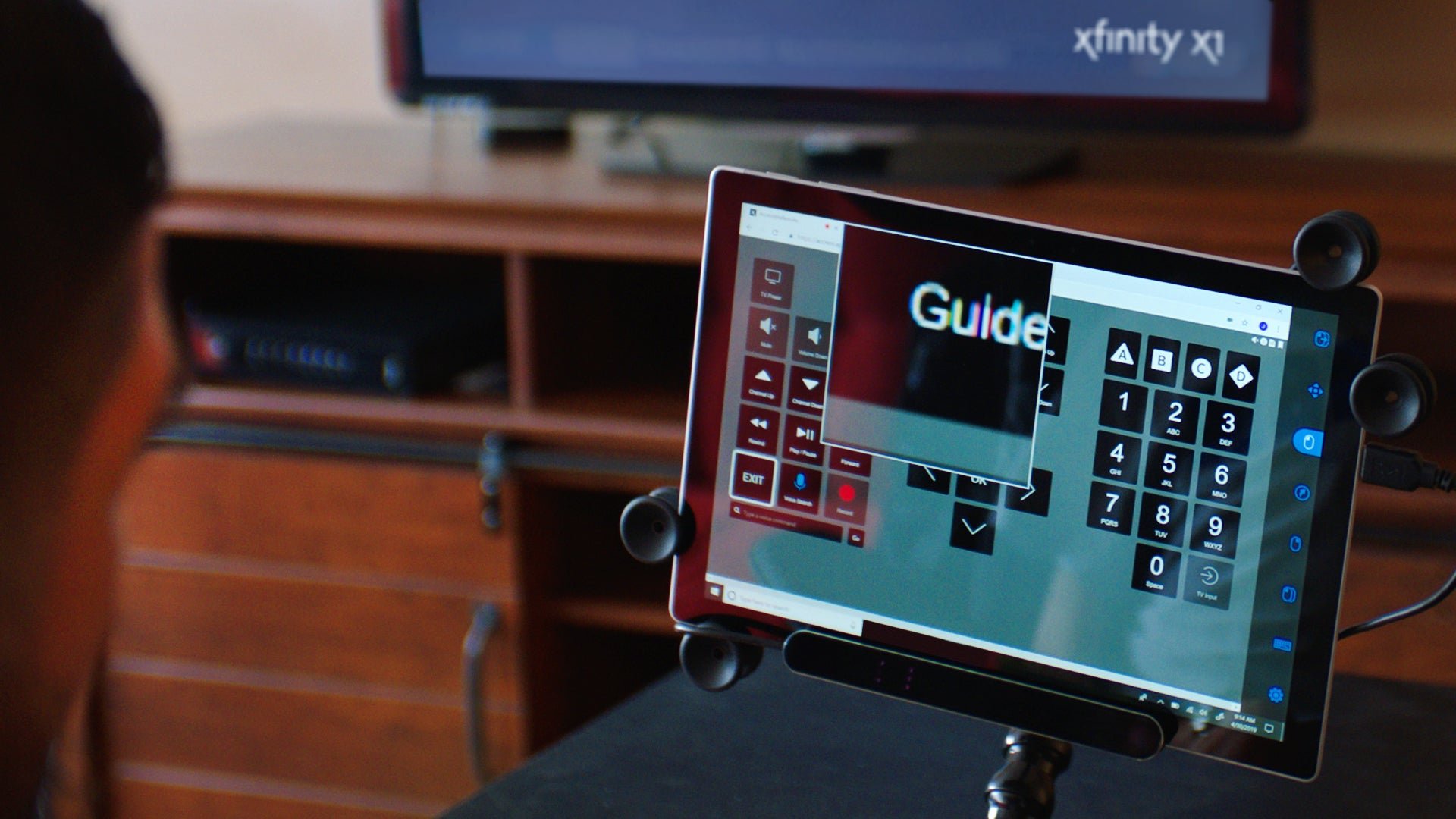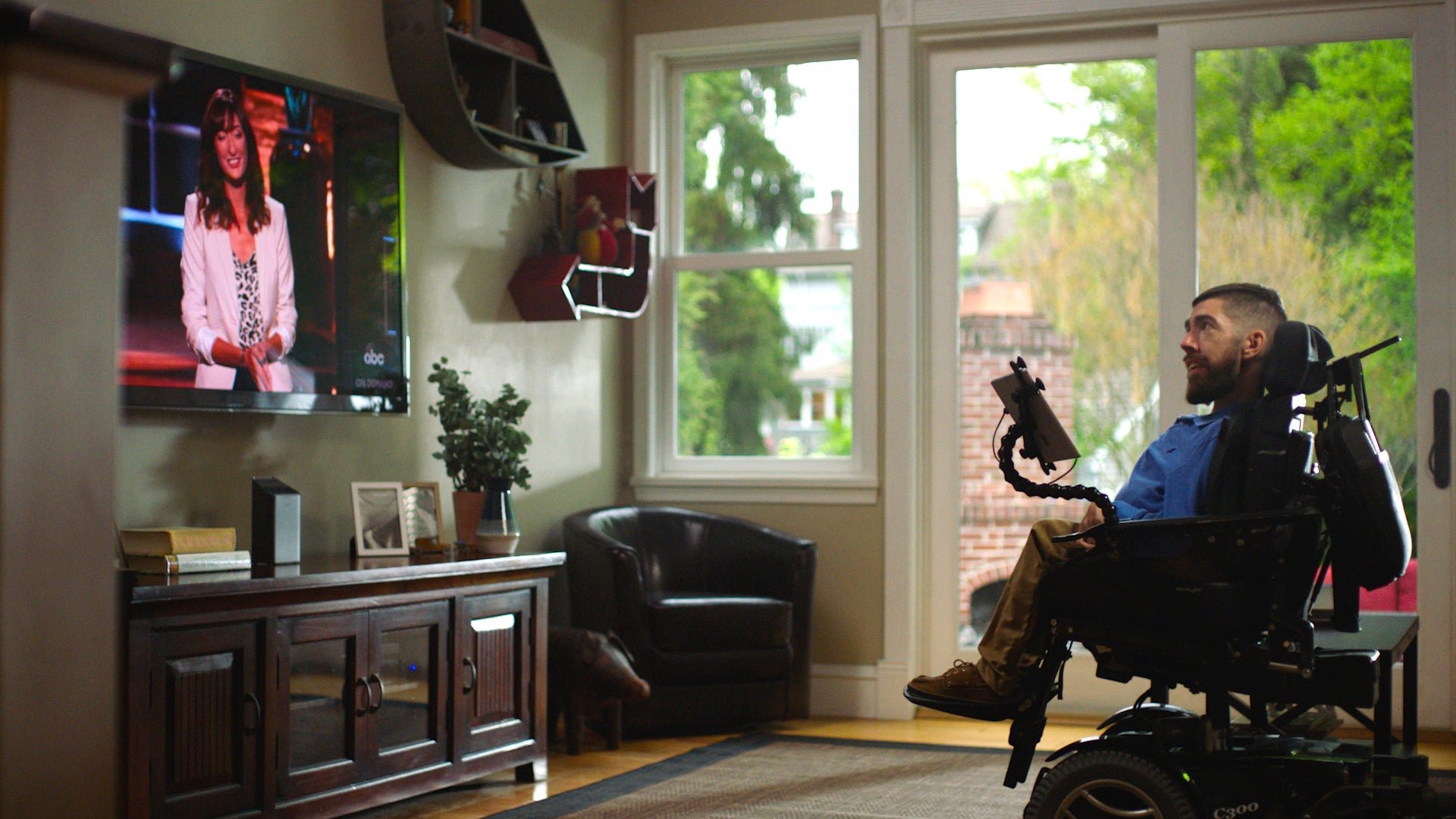Comcast’s new remote control feature allows viewers to change the channel with their eyes
Forget what you know about clunky TV remote controls. Comcast announced today a new feature in its web-based controller that allows users to switch channels with a glance. Developed by the telecommunications giant’s in-house accessibility lab, the interface is primarily conceived for US customers with spinal cord injuries, ALS, or other conditions that make it difficult or impossible to use a traditional remote control.


Forget what you know about clunky TV remote controls. Comcast announced today a new feature in its web-based controller that allows users to switch channels with a glance. Developed by the telecommunications giant’s in-house accessibility lab, the interface is primarily conceived for US customers with spinal cord injuries, ALS, or other conditions that make it difficult or impossible to use a traditional remote control.
The eye-control function is available to subscribers of Comcast’s X1 video platform who have an eye-tracking device and a mobile tablet. Through the online version of Comcast’s TV remote control (xfin.tv/access), users can turn on a feature that tracks where their eyes are focused, which gives them the ability to flip through channels by simply by blinking at or staring for a few seconds at a button on the screen. “Your eyes essentially function as the clicker or the mouse,” Tom Wlodkowski, who leads Comcast’s accessibility department, said at a June 13 press demo in New York.
“Changing the channel on a TV is something most of us take for granted but until now, it was a near-impossible task for millions of viewers,” he explains. Wlodkowski, who is blind, knows first hand the daily challenge of navigating interfaces designed for able-bodied users.
Before voice guidance was introduced on TVs about four years ago, customers with visual impairments could access a limited number of channels independently. “All I could do was channel up or channel down or memorize the channel number,” says Wlodkowski. “You may ask, ‘Do blind people watch TV?’ Ask my brother, who is sighted, and he’ll say, ‘He watches TV too damn much!'”

Comcast’s eye-control function takes several steps to set up—likely requiring more patience than the promised five-second setup—but most assistive technology requires customization depending on one’s preferences and abilities. Comcast service professionals aren’t yet trained to offer in-house setups for the eye-control feature, though customers can get some guidance by calling Comcast’s accessibility-focused call center, Wlodkowski advises.
Age of eye gaze
Eye-gaze technology isn’t new. Researchers in the 1940s recorded the “eye fixations” of military pilots to improve the layout of instruments. Russian psychologist Alfred Luk’yanovich Yarbus, who wrote the seminal volume on the topic, analyzed eye movements with the aid of suction cups attached to his subjects’ eyes in the 1950s and ‘60s. Nurse Nancy Cleveland and her husband, developer Dixon Cleveland, have been teaching people who are “locked in their bodies” how to use computers with their gaze since 1986. Web design usability researchers also have used eye gaze to study online reading patterns, and several car manufacturers have installed eye-tracking cameras as a safety feature. The technology tracks the direction of the drivers’s gaze and triggers a warning if they doze off at the wheel.
Comcast is the first US entertainment company to offer eye control in earnest. Netflix experimented with “Eye Nav” during a hackathon last year, but dampened prospects that it would actually be implemented.
Wlodkowski says that channel surfing is just the beginning. Soon Comcast’s eye-gaze technology will be integrated with the company’s smart home services, allowing customers to turn on lights, control the thermostat, or open the door with their eyes. He says that Comcast isn’t collecting user data from its accessibility programs. “Entertainment should be enjoyable by everyone without having to disclose their disabilities” he tells Quartz. No data is kept unless customers specifically request that their preferences be logged on their file, he says.

Eye control is one of several of Comcast’s accessibility initiatives. Aside from establishing a dedicated 90-person call center for the 20,000 monthly inquiries for accessible devices and services, Wlodkowski and his team of 10 universal design experts work across the company to make sure that Comcast’s products and services are available to the greatest number of customers, including people with various physical, developmental, and mental disabilities.
Like everyday conveniences originally conceived as assistive technologies—closed captioning for deaf populations or sidewalk ramps for people in wheelchairs—Wlodkowski champions the idea that creating accommodations for what are often labeled as “charity populations” ultimately benefits the whole. “We’re doing the ‘digital curb cut,” he says. “We want to open as many pathways to our services as possible.”
But what about solving the most universally vexing aspect of TV-watching: a feature to help people locate a misplaced remote control? “That’s a good one,” laughs Wlodkowski. “We need to do that.”